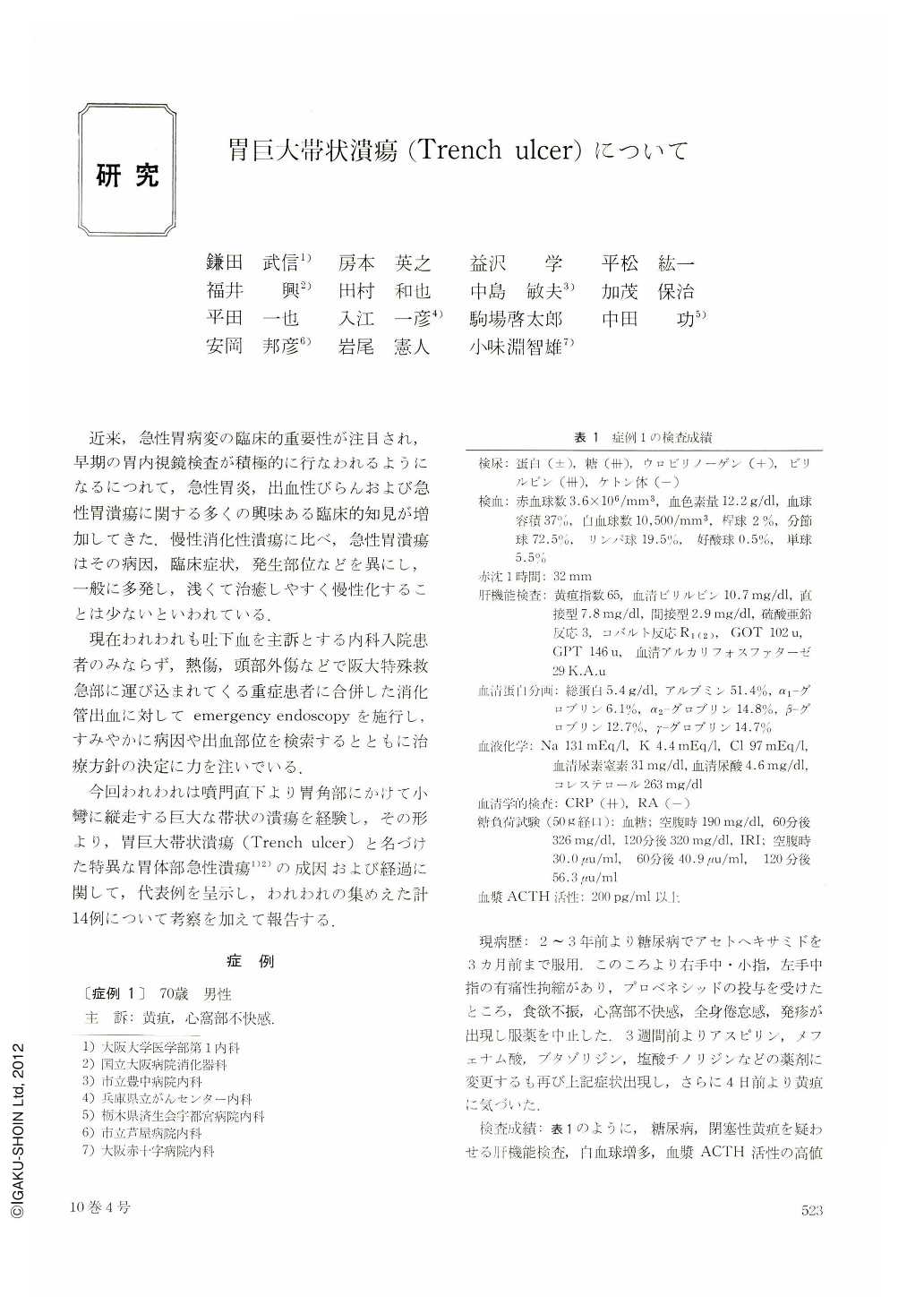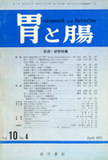Japanese
English
- 有料閲覧
- Abstract 文献概要
- 1ページ目 Look Inside
近来,急性胃病変の臨床的重要性が注目され,早期の胃内視鏡検査が積極的に行なわれるようになるにつれて,急性胃炎,出血性びらんおよび急性胃潰瘍に関する多くの興味ある臨床的知見が増加してきた.慢性消化性潰瘍に比べ,急性胃潰瘍はその病因,臨床症状,発生部位などを異にし,一般に多発し,浅くて治癒しやすく慢性化することは少ないといわれている.
現在われわれも吐下血を主訴とする内科入院患者のみならず,熱傷,頭部外傷などで阪大特殊救急部に運び込まれてくる重症患者に合併した消化管出血に対してemergency endoscopyを施行し,すみやかに病因や出血部位を検索するとともに治療方針の決定にカを注いでいる.
It is well known that acute gastric ulcer has a variety in size and shape. The authors experienced two cases with unusual giant ulcers of “trench” shape found in emergency endoscopy and reported in 1973. Then, 12 more cases were encountered until 1974. This report deals with the clinical, endoscopical and histological characteristics of the“trench”ulcer. The characteristic findings in endoscopy were a“trench”ulcer running on the lesser curvature (10 cases) or two in parallel on the anterior and posterior walls (4 cases), from the cardia to the angle. In several cases, these unusual features misled to the initial diagnoses of malignant lymphoma or advanced cancer of Borrmann Ⅲ type. The healing process could be followed in four cases endoscopically. The ulcer was narrowing into a linear one and tapering gradually from its oral portion. Scar formation could be seen about two months later in cured cases and no recurrence was found during the follow-up period. Histological study was performed in three patients. The ulcers extended through the muscularis mucosae (Ul-Ⅱ). Large amounts of edema were seen in all the layers of the stomach. The zone of fibrinoid necrosis was not found in the floor of the ulcer. A large scale fibrinoid degeneration was seen at the edematous submucosal layer. Arteriosclerosis of the serosal vessels was also seen. The surrounding mucosa showed an extensive intestinal metaplasia.
The pathogenesis of gastric ulcer has been obscure yet. All 14 patients were over 40 years old, and had the complication such as cardiovascular diseases or diabetes mellitus. From these observations, it seems that a circulatory disturbance in the stomach may contribute as one of the important factors to the cause of the“trench”ulcer. The ulcerogenic drugs such as aspirin, anti-inflammatory drugs or corticosteroids may also contribute to its formation.

Copyright © 1975, Igaku-Shoin Ltd. All rights reserved.


